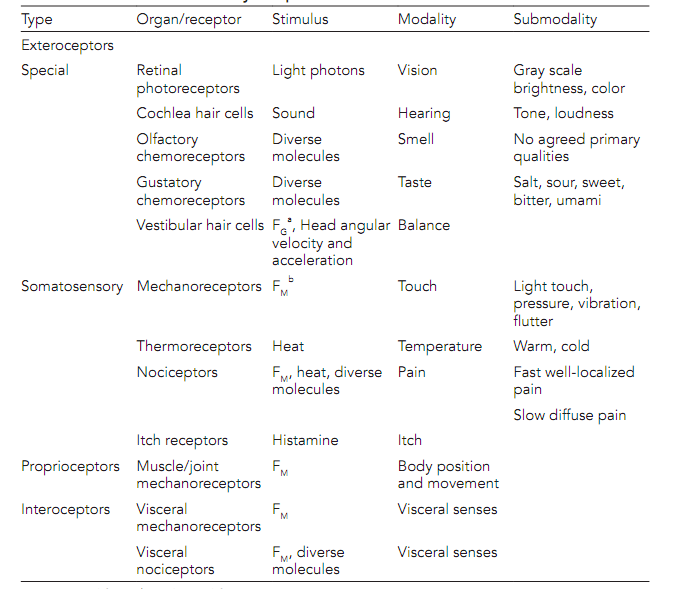Modality segregation
The qualitative personality of a sensation is known as its modality however it is poorly defined in the neuroscience literature but the table below can be seen for a version. There are two end-member hypotheses which account for how stimulus quality is encoded.

The sparse coding (i.e., labeled line) hypothesis is that a single class of sensory receptor and its afferent are essential and enough to account for each kind of sensation. The correspondence between receptor class and the personality of the sensation takes place since a sensory receptor responds only to a particular kind of stimulus (example, sodium chloride, pressure). For illustration, a labeled line exists for skin itch as firing of a single population of afferents, and no other, causes the itching.
The population coding hypothesis is that firing of numerous kinds of afferent is needed to generate a given sensation. This is clearly the situation for color vision in which three populations of wavelength-selective cones are essential to see colors. But this is a false dichotomy as most sensory systems lie somewhere along a spectrum between these two end-members. Even in a single class, the receptors and their afferents vary in properties like threshold, and the variety of the stimulus quality over which they operate. For illustration, the auditory neurons differ in the range of sound pressure levels they are sensitive to. The neurons which fire over a wide variety are said to be broadly tuned. The Population coding is needed to account for compound sensations that should include simultaneous activation of some receptor kinds by a single stimulus. With processing this makes possible a rich range of higher order sensory experience (example, wetness, texture).
The Stimulus quality is determined by the sense organ. Surgically rerouting the visual pathways to auditory cortex resulted in animals that behaved as if they interpreted input into the redirected pathway as light, not sound. These further suggest that the sensory cortex might be instead of general purpose machine.